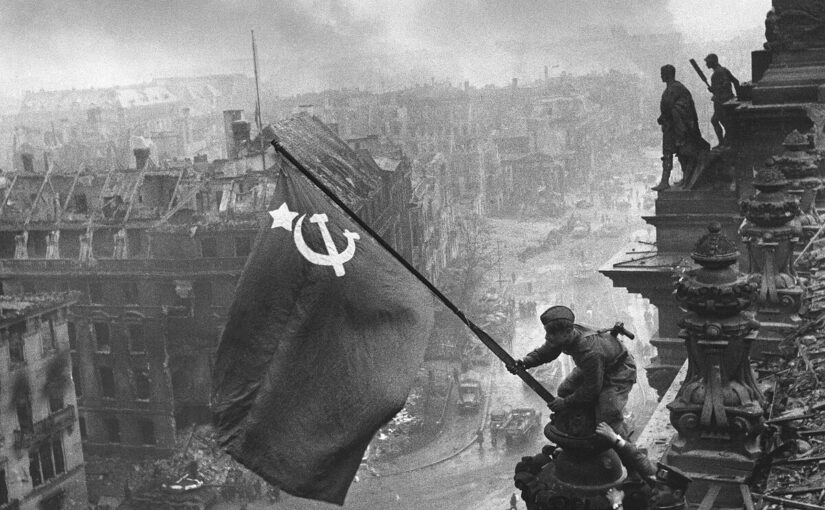April 20th, 1945. On the Führer’s birthday, Nazi Germany is on its last legs. As the Soviet Artillery begins to hammer the city from the east and the Allied forces closing in on the Rhine from the west, it may have just dawned on Adolf Hitler, who had ruled Germany with an iron fist for the last twelve years, that his thousand year Reich may never come to pass.
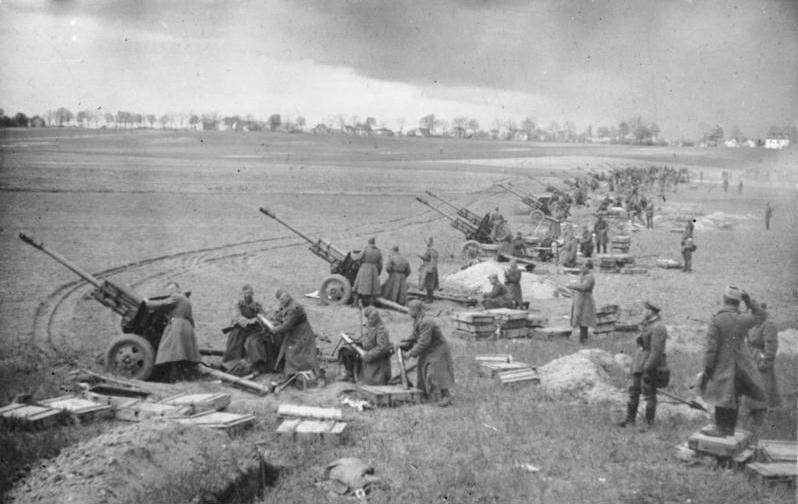
1944 had been a disaster for the German war effort. Italy had become embroiled in Civil War in the aftermath of the deposition of Mussolini the year prior, with the fascist faction being a puppet of Hitler. The war had turned sour and the Fascist only controlled the North by the end of 1944. In the west, the Allies had made a great achievement with the Normandy Landings on D-Day, and had been liberating France all throughout the year. With mass army encirclements across the Eastern Front, the Red Army was breezily pushing across Eastern Europe, uncovering Nazi war crimes along the way.
Bulgaria and Romania had fallen under Soviet control, with Hungary holding out in Budapest as the last bastion of Fascism in Eastern Europe. Hitler, hoping to secure Hungarian oil fields, had focused the last of his armoured reserves onto relieving the defenders of Budapest. However, this had fallen right into Soviet hands. Considering that Hitler had pushed the armoured corps down to the increasingly pressurised Hungarian front, this meant that the Polish front would, hopefully, be a breeze. In just 11 weeks, the Soviet Army captured Warsaw and arrived on the outskirts of Berlin.
Throughout January of 1945, the outgunned Germans were forced into desperate retreat. General Heinz Guderian insisted to Hitler on the need for more armour in Poland. Whilst Hitler claimed that he would send two SS Panzer Divisions, these only ended up on the Hungarian front, leading to mass surrenders on the Polish Front. Meanwhile, propaganda echoed over the radio, implying the incoming apocalypse, comparing the advancing Soviets to the Mongol horde intent on bringing about the death of civilisation, encouraging thousands of Germans to flee west.
However, the problem with the Soviets speedy advance was that it had left Field Marshal Georgy Zhukov’s flank exposed. He decided not to advance any further onto the capital of the Reich until it was covered. Managing to trap German forces in a northern pocket in Prussia, the new Front line extended from Stettin in the north all the way down to the Czech border.
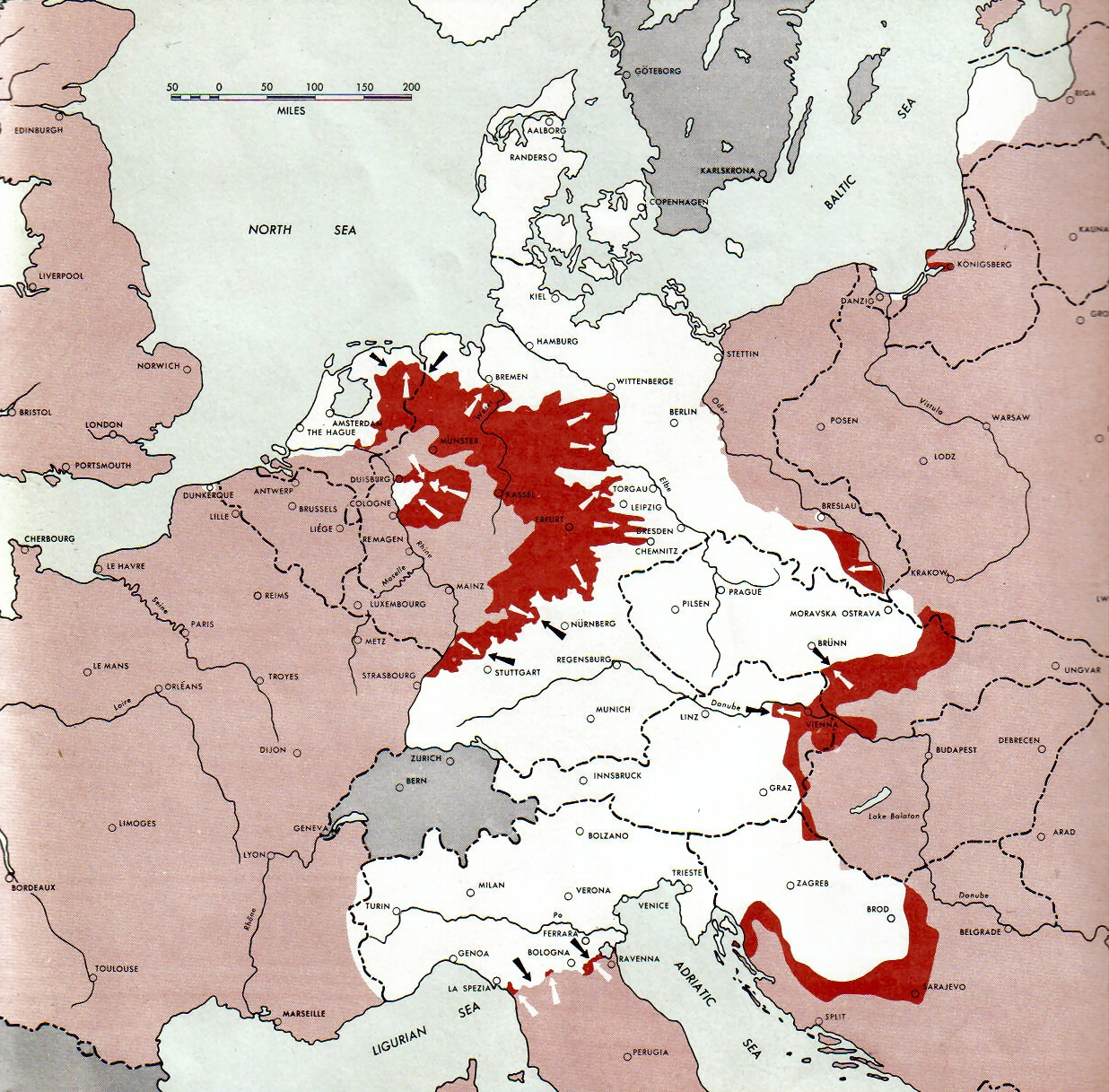
Despite assurance from the Allies that Berlin would fall into Soviet hands after the war, Stalin was quick to rush the capital, devising an encirclement around the city and a force to push towards the Elba river to meet up with the Allies. The 1st Belorussian Front would be the centre of the thrust towards Berlin, whilst the 1st Ukrainian Front would push from the south towards Potsdam and Dresden and the 2nd Belorussian Front would push from the north in order to prevent reinforcement. Used to open fighting in massive spaces, veterans of the Battle of Stalingrad handed out leaflets regarding the ins and outs of urban combat.
Whilst the German Defence force seemed decent enough, totalling around 760,000 men, with additional tanks, artillery and aircraft, it was nothing compared to the sheer numbers of the Red Army, who had a force of 2.3 million men attacking Berlin. In addition, much of the German defences were made of the Volkssturm, a mass conscripted force of any man between 16 and 60. Much of the army was also comprised of Hitler Youth boys, some even as young as 12. Furthermore, having lost the Hungarian oil fields, they could not rely on their Panzer Divisions or the Luftwaffe for much support.
The battle began on April 16th near Seelow Heights, beginning with barrages from Katyusha Rocket launchers, which lit up the night. One Soviet Soldier described it as being as bright as daylight, with them having to cover their ears to stop them from going deaf. However, due to this mass bombardment, the terrain was significantly more difficult to traverse for the Red Army, not just because of the holes in the ground but also the spotlights, intended to blind the enemy, ended up reflecting in all the smoke, confusing the advancing forces.
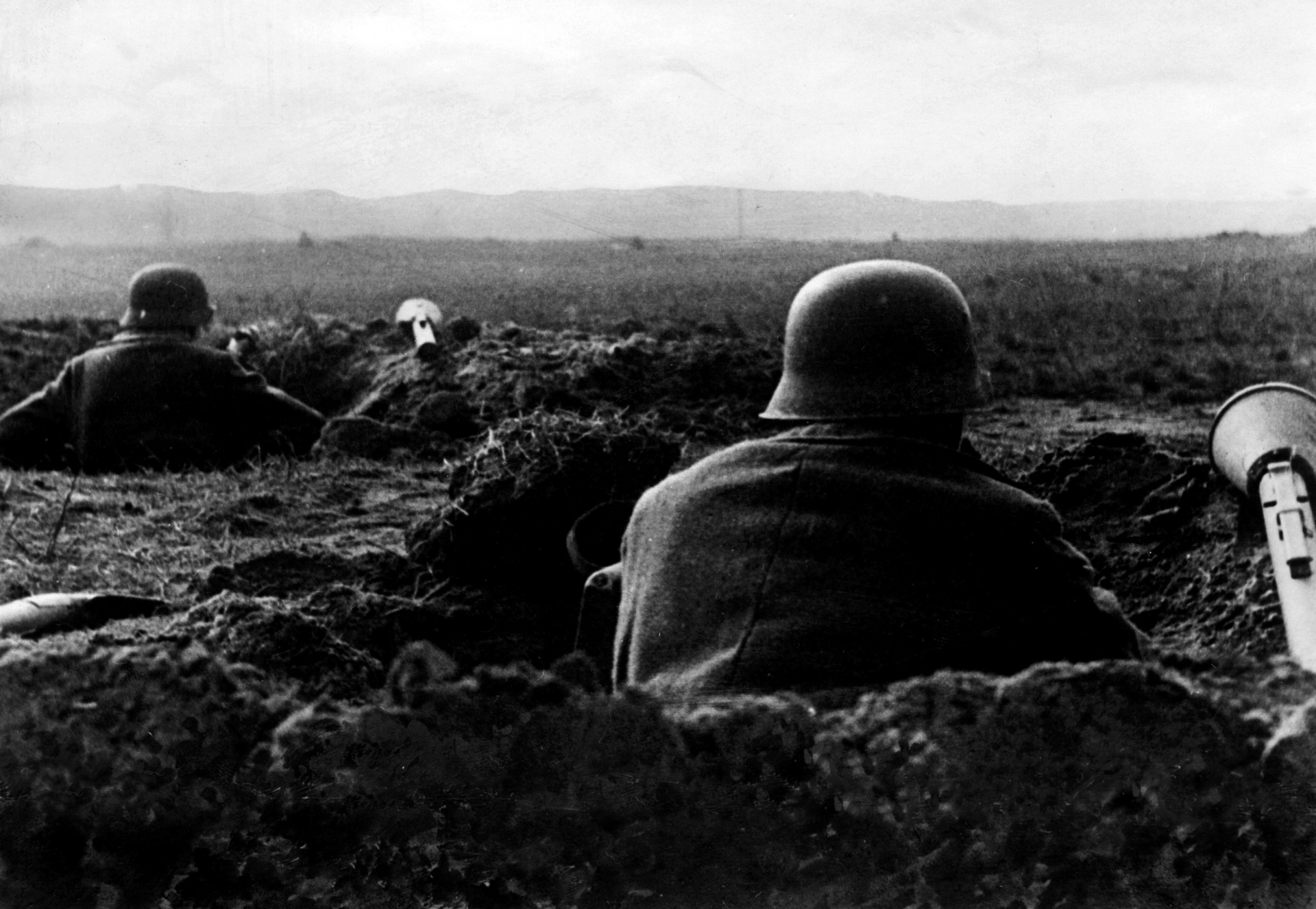
The Oder River was becoming another problem in the Soviet Advance, as many who tried to cross it were cut down by the desperate defence forces. Attempting to force a crossing, Zhukov ordered that both tank armies attack simultaneously, causing enormous traffic jams behind the front lines. Upon reaching the heights, the attackers were once more pushed back by concealed artillery divisions and Panzerfausts. Despite these setbacks, the South had eventually broken, and Soviet forces finally had unlocked the gates to the capital city.
As the initial footmen attacked Berlin, Hitler, a shadow of his former self, cowered in the Führerbunker, a secret underground complex buried deep underneath the Old Reich Chancellery in Berlin. Down underneath the city, he was accompanied by Martin Bormann, Personal Secretary to the Führer and Chief of the Party Chancellery, Joseph Goebbels, Gauleiter of Berlin and Reichsminister of Public Enlightenment and Propaganda, with his family and Eva Braun, the long time lover of Hitler. His last visit to the surface was on his birthday of April 20th, awarding an Iron Cross to a young boy in the Hitler Youth. He was noticeably withered and older, having developed an undiagnosed tick in his right hand.
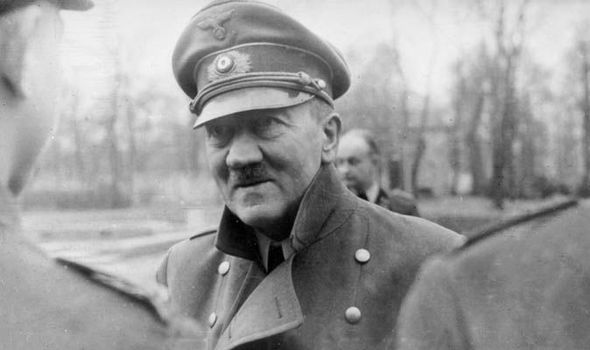
Despite this, Bormann and Goebbels remained loyal to the end. Over the next week, he distanced himself from Hermann Göring, former Head of the Luftwaffe, Speaker of the Reichstag and Minister of Prussia, who, upon learning that Hitler had plans of taking his own life, had telegrammed to the Führer requesting leadership of the Third Reich. Viewing this as an act of treason, he expelled him from the party, fired him from all government positions and ordered his arrest. A similar scenario befell Heinrich Himmler, Reichsführer of the SS, Reichminister of the Interior and Chief of the German Police, who had began peace talks with the Allies in an attempt to focus all effort onto the Eastern Front. Learning of this on April 28th, Hitler reacted to this the same way he did with Göring. Hitler’s paranoia and delusion was slowly catching up to him.
On the front, many soldiers, who had considered deserting, were hanged in the streets. By now, all the remaining forces could do was simply delay the inevitable, as forces cut in from the northeast and southwest. However, Hitler was still hopeful of a mass counter attack by General Felix Steiner, an Obergruppenführer in the SS, which would hopefully encircle the Soviet forces in the city, in a similar vein to what the Soviets had done to them at Stalingrad two years prior.
However, this attack never came, due to the lack of manpower and supplies in Steiner’s army. Upon learning this news on April 22nd, Hitler flew into a “tearful rage”. His delusions of a Thousand Year Reich shattered into a thousand pieces as he officially declared that the war was lost, saying that he would remain in Berlin until the end, whereupon he would commit suicide. It was not long after this that he heard of Mussolini’s execution by the Italian Partisans, whereupon his body was hanged upside down from the roof of a service station where it was spat on by the people he oppressed throughout his rule.

Soon after this, the encirclement was completed, leaving Berlin with around 85,000 men, 40,000 of whom were in the Volkssturm, defending the city. As the Soviets tightened their grip, the last bits of defence were just around the governmental district. Many high ranking Nazis were making plans of escape out of the city before it was too late. In the early morning of April 30th, the Soviet forces managed to capture the Reichstag, the symbolic heart of the German Reich, defended largely by foreign SS legions.
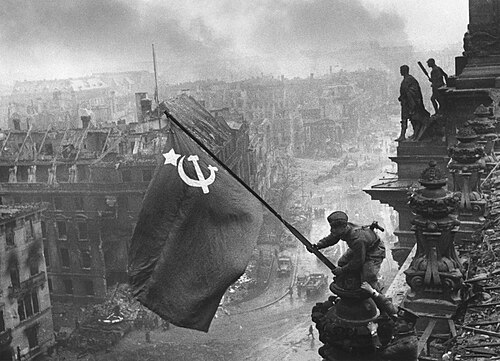
The previous day, Hitler was observed signing his final will and testament by Goebbels and Bormann. It detailed that Hitler would marry Braun as well as all “[he possesses] belongs – in so far as it has any value – to the Party. Should this no longer exist, to the State; should the State also be destroyed, no further decision of [his would be] necessary” except for portraits that he had purchased, which would be given to a gallery in Linz, his home town. It also detailed that he and Braun would soon commit suicide in order to avoid capture.
He detailed that the role of Führer be split into three bodies, the President, which would go to Karl Dönitz, Chief of German Naval High Command, the Chancellor, which would go to Goebbels, and Party Minister of the Nazi Party, which would go to Bormann. He gave an official order, allowing General Helmuth Weidling, who had largely led the defence of the city, to escape Berlin. Hitler then married Braun in a small ceremony, before both were found dead in his study in the Führerbunker in the afternoon of April 30th, Hitler having shot himself with his Walther PPK handgun, and Braun having taken a hydrogen cyanide capsule. Their ashes were cremated in a bomb crater with petrol as the Red Army’s artillery echoed through the streets
Despite this massive loss in morale for the Third Reich, Goebbels rejected Stalins offer for unconditional surrender, reducing the defence to isolated pockets around government buildings. However, eventually seeing the direness of the situation, Goebbels and his wife, Magda, fed cyanide to their six children before they too committed suicide on May 1st just outside the Führerbunker. His body was attempted to be cremated with the petrol left over from Hitler’s cremation, though it only did half a job, leaving the heavily charred body of Goebbels outside the bunker. His body was later taken into Soviet possession. In 1970, the remains were burned, crushed and scattered in the Biederitz River.
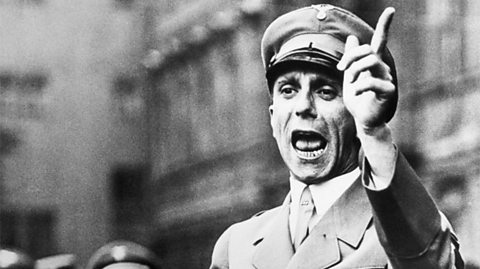
Weilding eventually began peace talks, ordering all the men to lay down their arms. The city fell and the German Reich was divided down the middle. By the time that Wilhelm Keitel, Chief of the Wehrmacht High Command, signed the unconditional surrender of Germany, only fragments of pre-Nazi German land remained a part of the Reich. Due to the new government never repudiating Nazism, Dönitz was never officially recognised as the President of Germany. Keitel was hanged in a botched execution for war crimes, crimes against peace, crimes against humanity and criminal conspiracy on October 16th, 1946. His head hit the trap door rim and it took him 24 minutes to die.
I call on God Almighty to have mercy on the German people. More than two million German soldiers went to their death for the fatherland before me. I follow now my sons – all for Germany.
The last words of Wilhelm Keitel
Many senior Nazis went into hiding, committed suicide or went on trial for their war crimes. Most notably, Bormann made a bid for freedom on May 2nd, eventually giving up and committing suicide on the grounds of Lehrte Station in Berlin. Unaware of this, the International Military Tribunal tried him in absentia at Nuremberg. His remains were not discovered until 1972 and were conclusively proven as his in 1998. His remains were cremated and his ashes were scattered over the Baltic Sea by his surviving family, in order to prevent a potential grave from becoming a neo-Nazi rallying site. His eldest son, Martin Adolf Bormann, openly denounced his father’s Nazi beliefs and Hitler, his godfather, and became a priest and a theology teacher, working on a mission in the Congo and meeting Holocaust survivors in Israel. He passed away in 2013.

Heinrich Himmler was captured by allied forces. After interrogation, he was subjected to a medical exam on May 23rd, including an oral one. Upon declining to open his mouth, he bit into a potassium cyanide capsule concealed in his mouth and died despite efforts to expel the poison from his system. He was buried in an unmarked grave, the location of which remains unknown to this day. His daughter, Gudrun Berwitz, openly associated with neo-Nazi circles and married an official of the neo-Nazi Homeland Party. She passed away in 2018.
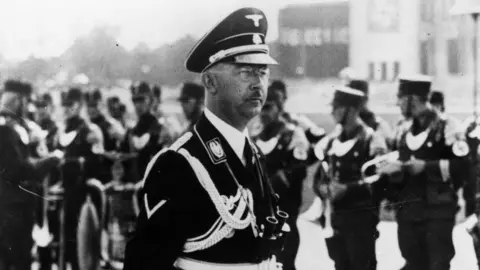
Whilst Göring did end up at the Nuremberg trials for the role he played in the Holocaust and other crimes against humanity, he was not given the punishment assigned to him by the tribunal. Before his execution by hanging, he too ingested cyanide and died. His body was displayed on the execution grounds for witnesses before being cremated and his ashes thrown into the Isar River. Edda, his only child, hardly spoke publicly about her father aside from one interview in 1986, where she recalled him fondly. She passed away in 2018
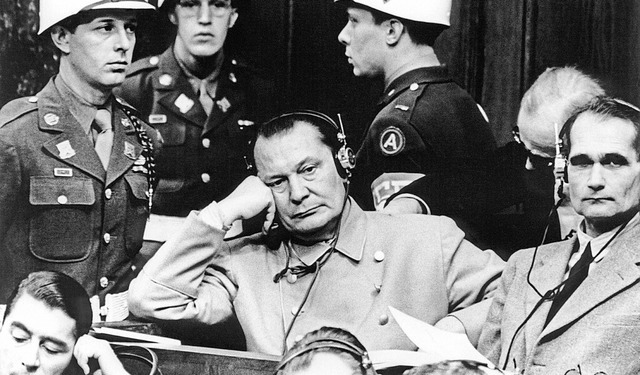
Dönitz was also put on trial at Nuremberg, being found guilty for his crimes against peace. He was sentenced to ten years in prison. Whilst never repenting for his role in Nazi Germany, saying that he “acted at all times out of duty to his nation”, he actively avoided contact with neo-Nazis, even when approached by Manfred Roeder, who still believed him to be the legal leader of Germany, something that Dönitz called ridiculous. Roeder, taking this as a declaration of resignation, declared himself President of Germany and became an active terrorist.
Dönitz died on Christmas Eve 1980 at his home in Aumühle. He was buried without any military honours during a service where no-one was allowed to wear military uniform. Despite this, over 100 people in attendance had earned the Knights Cross in battle during the Second World War. Only Dönitz’s daughter, Ursula, survived the war, who remained very private about her family’s history until her death in 1990.

Weilding was taken into Soviet Custody, where he was sentenced to 25 years in prison for crimes perpetrated during the German occupation of the East. He died of an apparent heart attack in Vladimir whilst in the custody by the KGB in 1955. He was buried in an unmarked grave in the cemetery of Vladimir Central Prison. It is unknown if he had any children
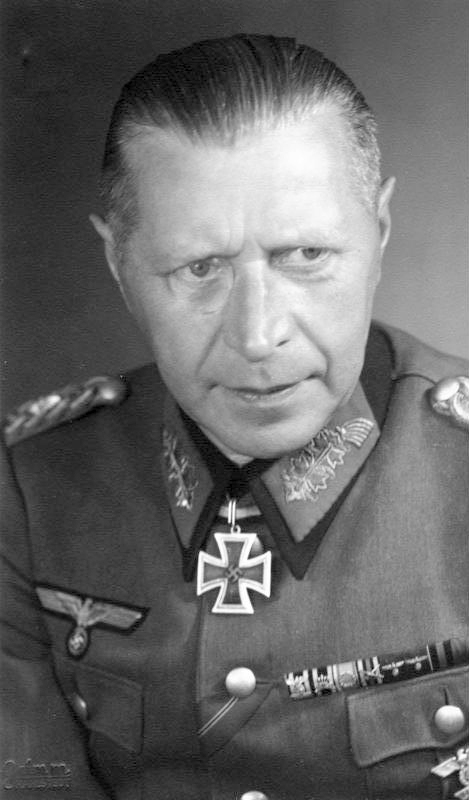
Other high ranking Nazis, not directly involved in the Battle of Berlin also befell similar fates. Albert Speer, Reichminister of Armaments and Munitions and a chief Nazi Architect, was sentenced to 20 years at Nuremberg, attempting to portray his role in Nazi Germany as less significant than his peers, claims that were disproven after his death in 1981, being revealed that he was involved in multiple slave labour programmes across Nazi Occupied Europe. Adolf Eichmann, an SS Obersturmbannführer and key architect of the Holocaust, and Josef Mengele, an SS Hauptsturmführer and head of human experimentation at Auschwitz, both escaped to South America after the war. Whilst Eichmann was captured by Mossad, the Israeli Intelligence Service, and executed in 1961, Mengele lived out his life in Argentina, Paraguay and Brazil, until drowning after suffering a stroke in 1979.
In their vengeful advance across eastern Europe, thousands of civilian Germans were murdered by the Red Army, including thousands of sexual assaults of women. In all, 40 million people were killed by the Nazis under their regime, 17 million of whom were killed systematically as a part of the Holocaust. The Constitution of the Federal Republic of Germany strictly outlines laws that will prevent a Nazi-like party from ever rising again.
Every person shall have the right freely to express and disseminate his opinions in speech, writing, and pictures and to inform himself without hindrance from generally accessible sources. Freedom of the press and freedom of reporting by means of broadcasts and films shall be guaranteed. There shall be no censorship.
These rights shall find their limits in the provisions of general laws, in provisions for the protection of young persons, and in the right to personal honor.
Art and scholarship, research, and teaching shall be free. The freedom of teaching shall not release any person from allegiance to the constitution.
Article 5 of the German Constitution
Whoever allows content (section 11 (3)) suited to violating the human dignity of others by insulting, maliciously maligning or defaming a group defined by its national, racial, religious or ethnic origin, ideology, disability or sexual orientation or individuals on account of their belonging to one of these groups to come to the attention of another person who belongs to one of the aforementioned groups without having been requested to do so by that person incurs a penalty of a term of imprisonment not exceeding two years or a fine.
Section 192a of the German Criminal Code
Casualties
- The Greater Germanic Reich – 917,000–925,000
- Soviet Union – 361,367
- Civilian – 125,000
